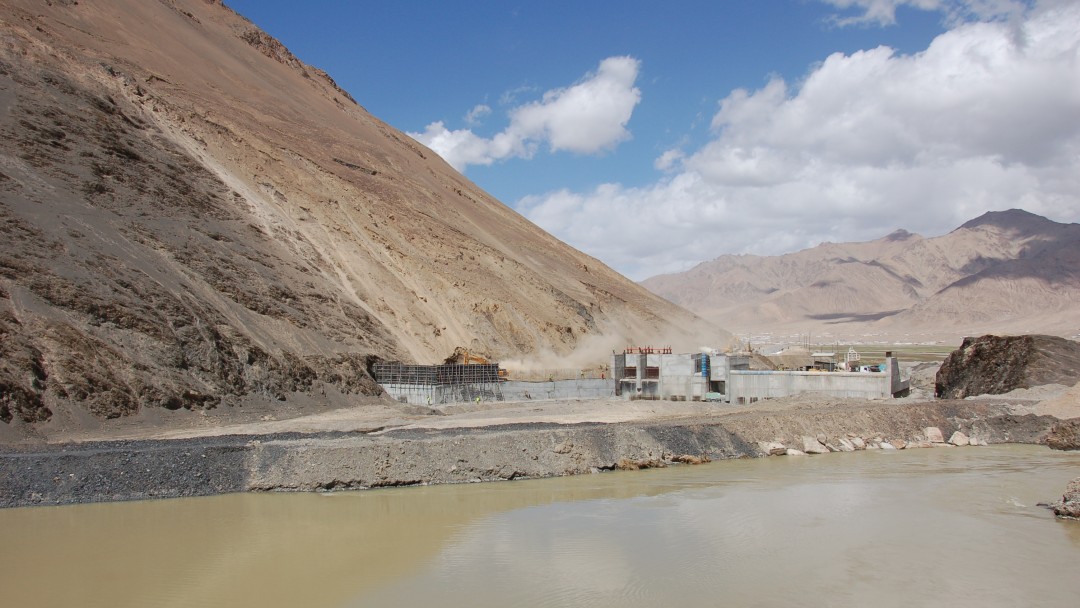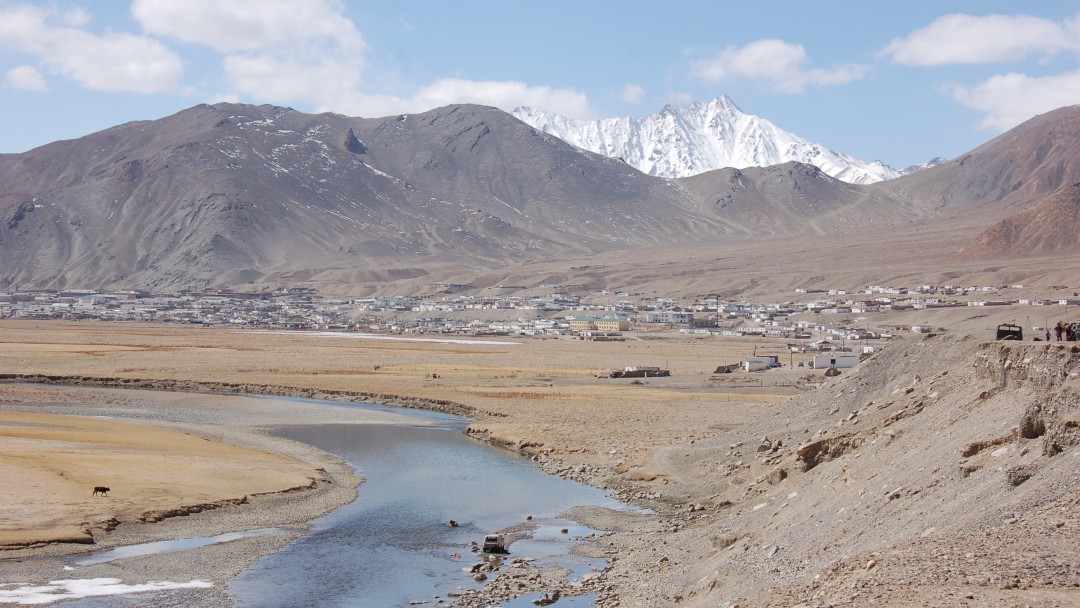News from 2018-09-20 / KfW Development Bank
World’s highest hydropower station celebrates official opening

KfW supports energy production in Tajikistan's Pamir Mountains
Tajikistan's President Emomali Rahmon officially opened one of the world's highest hydropower stations on 13 September 2018. The new power plant located in the small town of Murgab has an output of one megawatt and is now responsible for supplying power to local people and businesses. KfW supported the building project, providing EUR 7.4 million on behalf of the German Federal Ministry for Economic Cooperation and Development (BMZ).
The hydropower station is located in the Pamir Mountains at an altitude of 3,600 metres and is powered by the Ak-Suu River. The province is one of the poorest and most remote areas in the entire region. A simple trip to the province's capital Khorugh can take hours over mountain roads, which are constantly at risk of avalanches, mud, rubble or rockfall depending on the season. And once travellers reach Khorugh, they then face another eleven or twelve hours in the car before they reach Dushanbe, Tajikistan's capital. Due to their isolated location, the people of Murgab rely heavily on their own source of power.
Until recently, their power came from a small-scale hydropower plant, which was built in 1962 and had thus become extremely outdated. It also didn't have the capacity to cover growing energy demand. And while the voltage supply of 100 to 110 volts was normally enough for domestic lighting, radios, televisions and phone chargers, it was unable to cover the energy needed for heating – a real concern in an area with harsh winters like the Pamir Mountains.

Tough conditions for builders
Then in 2015, a 100-year flood swept away almost every last trace of the old power plant. The remains had to be removed for the plant's modern replacement. Since floods of this magnitude are expected to become a more regular occurrence in future due to climate change, suitable adjustments have been incorporated into the new building. For example, the canal that supplies water to the power plant is now further away from the river.
Apart from the new canal, there is also a new weir system, a new turbine building, a new workshop and a new warehouse. The turbines and electro-mechanical machinery are also brand new. The operator Pamir Energy – a Public Private Partnership, whose investors include the Aga Khan Development Network – also updated the distribution grid using its own funds. With only a few frost-free months a year and long, hard winters, the extreme weather conditions made constructing the plant particularly challenging. Nevertheless, the construction work was still completed on time.
The new run-of-river power plant offers multiple benefits: as well as providing a reliable power supply, it also generates positive effects for the environment. In the past, timber and dung were conventional fuels used to compensate for power shortages, but now their consumption is expected to fall. In turn, this will lower the impact from usage on the remaining scrub vegetation. As one of the only forms of vegetation in the mountain region, these bushes play an important role in the preservation of biodiversity. And the power plant's effects stretch far beyond the small town of Murgab. Following the successful completion of the project under difficult circumstances, the plant is a good example of how adapted, decentralised solutions can ensure an environmentally friendly energy supply, even in remote areas.

Share page
To share the content of this page with your network, click on one of the icons below.
Note on data protection: When you share content, your personal data is transferred to the selected network.
Data protection
Alternatively, you can also copy the short link: https://www.kfw-entwicklungsbank.de/s/enzBWrMC.B3bA
Copy link Link copied